
creatives magazine THE MILL A LOCAL EXCHANGE INSPIRING VIBRANT, PROSPEROUS COMMUNITIES carolina piedmont



DOLCELUSSO.COM lifestyle salon D L o ce usso I YOU OWE YOURSELF THIS MOMENT luxury +style PARK ROAD 4237 PARK RD, CHARLOTTE 980.859.2783 BAXTER VILLAGE 985 MARKET ST, FORT MILL 803.802.5877 STONECREST 7808 REA RD, CHARLOTTE 704.542.6550 KINGSLEY 1377 BROADCLOTH ST, FORT MILL 803.802.5000





2515 CHERRY ROAD, ROCK HILL SC 800-424-0852 BURNSCADILLAC.COM
THE 2023 CADILLAC LYRIQ
DYNAMIC, MODERN + FULLY ELECTRIC





FOR MORE INFORMATION ON THE 2023 CADILLAC LYRIQ, VISIT CADILLAC.COM

3071 US-21 FORT MILL, SC | 803-835-0444 PROVIDENCE-CHIROPRACTIC.COM 10 CELEBRATING YEARS
 Dr. Jessica Harden
Dr. Jessica Harden



ASHEVILLE, NC | DEWILS.COM | GREENVILLE, SC
Will White

@ArtPopStreetGallery


The featured cover art is an oil painting titled “Patrol 7” by Matt Myers and is provided courtesy of ArtPop Street Gallery.

{ }






12 THEMILLMAGAZINE.COM EDITION 14 NO. 1 CREATIVES a MTM THE MILL MAGAZINE EDITION 14 NO.1 WE ARE SOCIAL, TOO. JOIN THE CONVERSATION @themillmag PUBLISHER MarketStyleMedia EDITOR IN CHIEF TraceyRoman COMMUNITY EDITOR AubreyDucane CONTRIBUTING WRITERS PHOTOGRAPHERS ADVERTISING ad.sales@themillmagazine.com 803-619-0491 ©2023 THE MILL MAGAZINE. ALL RIGHTS RESERVED. NO PART OF THIS PUBLICATION MAY BE REPRODUCED IN ANY FORM WITHOUT THE EXPRESS WRITTEN CONSENT OF THE COPYRIGHT OWNER. THE MILL MAGAZINE DOES NOT NECESSARILY ENDORSE THE VIEWS AND PERCEPTIONS OF ADVERTISERS. CandaceMattingly LilyZhu Creatives OlgaSafranova KariShea Robb Webb FaBarboza SusanMoore



13 CREATIVES EDITION 14 NO. 1 THEMILLMAGAZINE.COM p.18 eatures T F p.30 p.56 Guild of Charlotte Artists 75 YEARS OF PROMOTING LOCAL ART AND STILL LOOKING FORWARD ARTPOP STREET GALLERY Class of 2023 How To Unlock Creativity your


TRAVELLike TRACY COUPLES GETAWAYS, GIRLFRIENDS WINE TOURS, AND MUCH MORE CALL 704-709-2090 OR VISIT TRAVELLike TRACY.COM TO BOOK.
16 THEMILLMAGAZINE.COM EDITION 14 NO. 1 CREATIVES inspiring small town
Character CHARACTER ∙ BACKYARD ∙ TEXTURE ∙ PROVISIONS
living


803-547-7779 | 1515 ONYX RIDGE, SUITE 108, FORT MILL, SC 29708 | MONARCHDENTISTRYOFGOLDHILL.COM
Dr. Teresa T. Mercado, DDS, FICOI with Eric Mercado and their French Bulldog, Boomer
How To Unlock Creativity your

Do you think that creativity is an innate gift? Think again.
Many people believe that creative thinking is difficult – that the ability to come up with ideas in novel and interesting ways graces only some talented individuals and not most others.
The media often portrays creatives as those with quirky personalities and unique talent.
18 THEMILLMAGAZINE.COM EDITION 14 NO. 1 CREATIVES
Text by Lily Zhu

19 CREATIVES EDITION 14 NO. 1 THEMILLMAGAZINE.COM
People engage in creative thinking every day, whether they realize it or not.
Photo by Fa Barboza.


20 THEMILLMAGAZINE.COM EDITION 14 NO. 1 CREATIVES
Researchers have also identified numerous personality traits that are associated with creativity, such as openness to new experiences, ideas and perspectives.
Together, they seem to paint a dire picture for those who consider themselves conventional thinkers, as well as those who do not work in creative occupations – including roles that are often considered traditional and noncreative, such as accountants and data analysts.
These beliefs miss a key part of how creativity works in your brain: Creative thinking is actually something you engage in every day, whether you realize it or not. Moreover, creativity is a skill that can be strengthened. This matters even for people who don’t consider themselves creative or who aren’t in creative fields.
In research that I recently published with organization and management scholars Chris Bauman and Maia Young, we found that simply reinterpreting a frustrating situation can enhance the creativity of conventional thinkers.
USING CREATIVE THINKING TO COPE WITH EMOTIONS

Creativity is often defined as the generation of ideas or insights that are novel and useful. That is, creative thoughts are original and unexpected, but also feasible and useful.
Everyday examples of creativity are plentiful: combining leftover food to make a tasty new dish, coming up with a new way to accomplish chores, mixing old outfits to create a new look.
Another way you do this is when you practice what’s called “emotional reappraisal” –viewing a situation through another lens to change your feelings. There is an element of creativity to this: You’re breaking away from your existing perspectives and assumptions and coming up with a new way of thinking.
Say you’re frustrated about a parking ticket. To alleviate the bad feelings, you can think of the fine as a learning moment.
If you’re anxious about a presentation for work, you can cope with the anxiety by framing it as an opportunity to share ideas, rather than as a high-stakes performance that could result in demotion if handled poorly.
And if you’re angry that someone seemed unnecessarily combative in a conversation, you might reevaluate the situation, coming to view the behavior as unintentional rather than malicious.
TRAINING YOUR CREATIVE MUSCLES
To test the link between creative thinking and emotional reappraisal, we surveyed 279 people. Those who ranked higher on creativity tended to reappraise emotional events
21 CREATIVES EDITION 14 NO. 1 THEMILLMAGAZINE.COM
more often in their daily life.
Inspired by the link between emotional reappraisal and creative thinking, we wanted to see whether we could use this insight to develop ways to help people be more creative. In other words, could emotional reappraisal be practiced by people in order to train their creative muscles?
We ran two experiments in which two new samples of participants – 512 in total – encountered scenarios designed to provoke an emotional response. We tasked them with using one of three approaches to manage their emotions. We told some participants to suppress their emotional response, others to think about something else to distract themselves and the last group to reappraise the situation by looking at it through a different lens. Some participants were also given no instructions on how to manage their feelings.
In a seemingly unrelated task that followed, we asked the participants to come up with creative ideas to solve a problem at work.
In the experiments, conventional thinkers who tried reappraisal came up with ideas that were more creative than other conventional thinkers who used suppression, distraction or received no instructions at all.
CULTIVATING FLEXIBLE THINKING

Negative emotions are inevitable in work and life. Yet people often hide their negative feelings from others, or use distraction to avoid thinking about their frustrations.
Our findings have implications for how managers can think about how to best leverage the skills of their workers. Managers commonly slot job candidates into creative and noncreative jobs based on cues that signal creative potential. Not only are these cues shaky predictors of performance, but this hiring practice may also limit managers’ access to employees whose knowledge and experience can play major roles in generating creative outcomes.
The result is that the creative potential of a significant part of the workforce may be underutilized. Our findings suggest
22 THEMILLMAGAZINE.COM EDITION 14 NO. 1 CREATIVES

23 CREATIVES EDITION 14 NO. 1 THEMILLMAGAZINE.COM
that supervisors can develop training and interventions to cultivate creativity in their employees – even for those who might not seem predisposed to creativity.

Our research also indicates that people can practice flexible thinking every day when they experience negative emotions. Although people may not always have control over the external circumstances, they do have the liberty to choose how to cope with emotional situations – and they can do so in ways that facilitate their productivity and well-being.

a MTM

24 THEMILLMAGAZINE.COM EDITION 14 NO. 1 CREATIVES
Lily Zhu is an Assistant Professor of Management, Information Systems, and Entrepreneurship at Washington State University. Her research primarily examines organizational behavior and entrepreneurship at the micro level, and she is currently focusing on questions related to how emotions and emotion management influence entrepreneurial pitches, creativity, and decision making. This article was originally published on The Conversation. THE MILL MAGAZINE



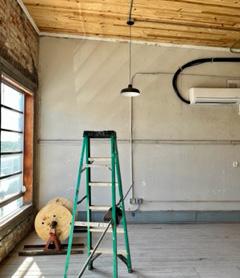







CHARLOTTE, NC | FORT MILL, SC | 704-919-0073 | WWW.MACKEYREALTY.COM new year. new move. your year. your move. NOW SERVING YOU IN TWO LOCATIONS 708 EAST BLVD CHARLOTTE, NC 28204 219 MAIN STREET, STE. 201 FORT MILL, SC 29715

9700
803.548.3937 | REDSTONEVISION.COM
Dr. Bhumika Patel, O.D. Optometrist and Owner
RED STONE DR, SUITE 300, INDIAN LAND, SC |
inspiring small town communities
Backyard
28 THEMILLMAGAZINE.COM EDITION 14 NO. 1 CREATIVES
CHARACTER BACKYARD TEXTURE PROVISIONS

 Tracy M. Frick Esquire SC Founding Partner
Tracy M. Frick Esquire SC Founding Partner
COMMERCIAL & RESIDENTIAL REAL ESTATE ATTORNEYS F RICKT RENTL IZZIO SouthPark-Charlotte NC 704-376-8181 Uptown-Charlotte NC 704-376-8181 University-Charlotte NC 704-376-8181 Fort Mill SC 803-324-4000 Rock Hill SC 803-324-4000 FrickTrentLizzio.com
Christina W. Lizzio Esquire NC | Partner
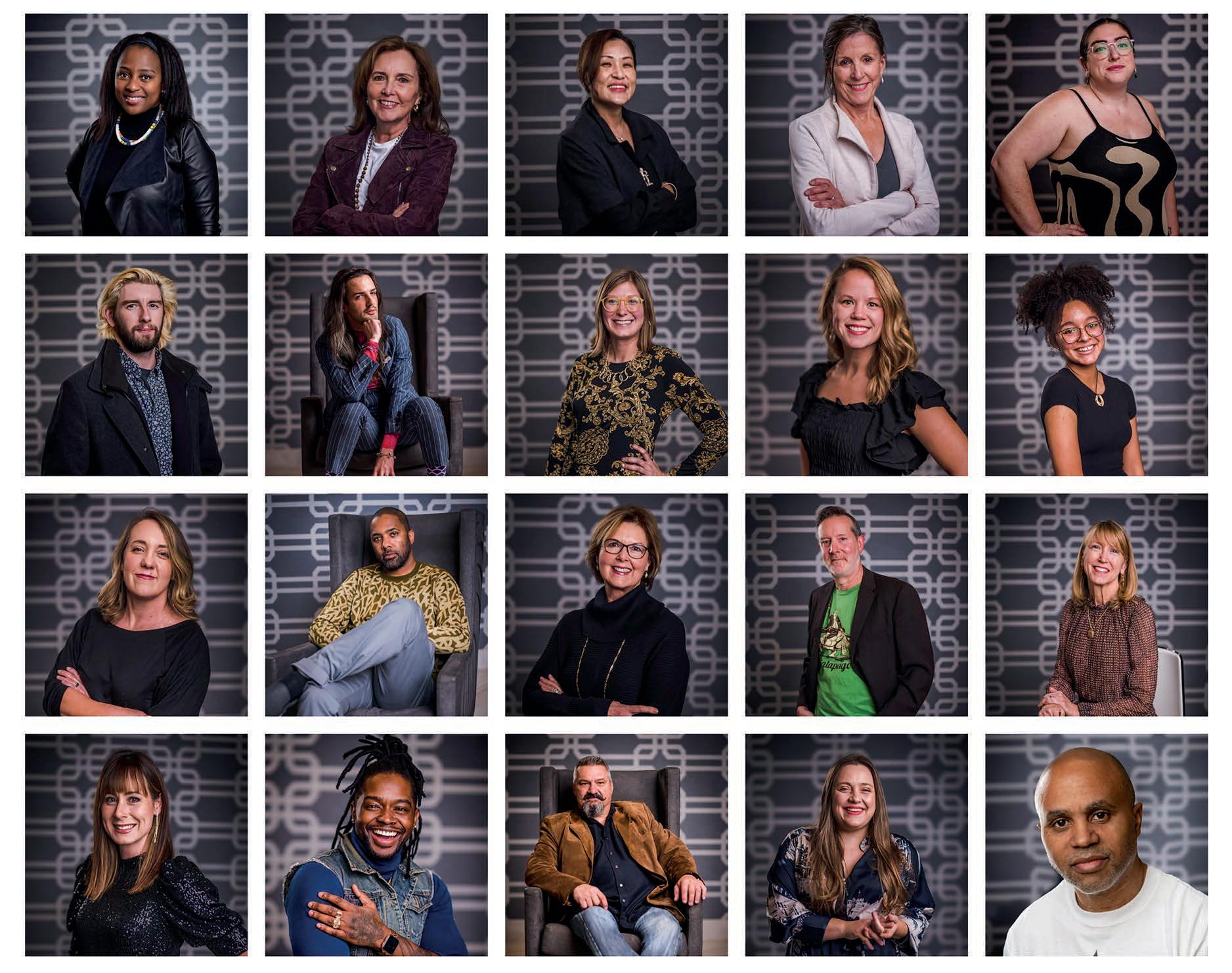
30 THEMILLMAGAZINE.COM EDITION 14 NO. 1 CREATIVES
20 Artists Join the ArtPop Cities Program. Photos by Robb Webb.
ARTPOP STREET GALLERY
Class of 2023
The class of 2023 artists’ artwork covers a wide range of mediums and subject matters, adding up to a truly diverse and exceptionally talented class. From fiber arts and sculpture to portrait work and collage, the 20 talented artists make up the 10th Anniversary Year of the #ArtPopCLT Cities Program. Their artwork is on display throughout the city on public media spaces and will run till year’s end.
The 20 juried artists come from Mecklenburg, Union, Catawba, Lincoln, Gaston, and York counties. “In 2022, our Cities Program artists’ imprint reached nearly 500 million media impressions. Just imagine how all that art has helped beautify our community and made Charlotte such a unique place to live,” said Brooke Gibbons, Director of Impact and Sustainability at ArtPop.
ArtPop Street Gallery, a 501c3 organization that gives artists and communities across the region greater access to art and art opportunities, has announced its Cities Program Class of 2023 artists will receive upwards of $7mm in outdoor advertising space for one year. To learn more, go to artpopstreetgallery.com.

31 CREATIVES EDITION 14 NO. 1 THEMILLMAGAZINE.COM
Text compiled by Candace Mattingly
Tina G. Vincent
@tinagvincent | tinagvincent.com
“My name is Tinashe (Tina) Gwata Vincent. I am a Mixed Media Artist and High School Art Educator, originally from Zimbabwe in Africa. I love mixed media because there are no rules, and it allows me to experience the possibilities of the materials. Through the joy of learning, exploration of materials and integration of techniques, I am able to create unique processes and products. Some of my favorite media include acrylic painting, quilting and sewing, collage, ceramics, paper mache, and batik. I often weave these applications throughout my work. One highlight of my art practice is my evolving creation of paintings and sculptures featuring black people with a variety of skin tones and body types. I aim to shine a light on this beauty that is often overlooked or underestimated. My work is a celebration of African hair in its natural form and faces of people whom society chooses not to see. When society creates these superficial roadblocks, they have in essence, ‘judged a book by its cover.’ In my opinion, it’s one thing when this marginalization comes from strangers; but it’s a more bitter pill to swallow when your own people plant seeds of insecurity. I create extra-large portraits of brown people to make the bold statement to everyone that this unique beauty deserves to be seen.”


32 THEMILLMAGAZINE.COM EDITION 14 NO. 1 CREATIVES
Vincent’s Village Paper-Mache Sculptures
Photos of artwork courtesy of ArtPop Street Gallery. Photos of artists by Robb Webb.
Doris Barahona

@dorisbarahonafineart | dorisbarahonafineart.com
“I was born in Santiago, Chile and have led a life open to change – new countries, cities, careers, and interests have opened my life to new experiences. I found that I love the process of learning –discovering, exploring, failing, succeeding, and taking important lessons from each step. I came to art late. I devoted a good part of my life to teaching children to be creative, analytical thinkers. I loved seeing the lightbulb go off as they learned to express their creativity. When I discovered painting, I began a fast and furious journey that I never imagined would bring me such pleasure and fascination. The opportunity for self-discovery has been tremendous. The juxtaposition between intellect and creativity, the process of thinking and letting go, a loop where one feeds the other, is part of the never-ending process of being an artist. All artists endure periods of frustration. It’s the discovery that follows that I find intoxicating. This is what drives me as an artist. I have learned to savor the process and rejoice in every small step forward. My medium is oil, although many of my abstracts are multi-media in nature: Cold wax, inks, charcoal, and shellac have all become part of the tools I use in my daily work. My painting process involves moving between the intellectual and artistic - the end goal is to find the balance between the two. The idea is to paint treeness and not tree, earthiness but not earth. The viewer ultimately decides what they see. In all of this, one of the most valuable parts of the process has been learning to see with an artist’s eye and, ultimately, learning to trust that I know what works.”

33 CREATIVES EDITION 14 NO. 1 THEMILLMAGAZINE.COM
Earth and Sky Oil Painting
Lee Ko

@workbylee | workbylee.com
“While taking a long break from work, I was a full-time mom to 4 kids. The mom’s role opened my eyes to a better world for my kids. It was my beginning to work with recycled materials. It was not fun to make trashed materials to be useful or to suit my aesthetic perspective. However, their transforming progress kept letting me put my attention on the overwhelming materials we created on the earth. I started with using electric wires. With my background as a metal artist, I knew the copper wires would be a suitable property in my work. I enjoyed the process, and I am still in love with it. The second project was using glass bottles. I learned that glass jars and bottles were not recyclable in my neighborhood. It surprised me, and I tried to find a way to use them in my work. “A Way Coming Back” was my first project with empty wine bottles and pasta sauce jars from my kitchen. It was disappointing to know my effort was so small compared to the amount of trashed glass because I only needed a few bottles to finish my project. However, I expect my work would be a good chance to think about materials we use daily and to see how the unwanted material is returning to us. There’s nothing that’s not precious, and everything has its own use.”

34 THEMILLMAGAZINE.COM EDITION 14 NO. 1 CREATIVES
A Way Coming Back
Reclaimed Glass, Reclaimed Copper Wire, Clay
Sally Fanjoy-Labrenz
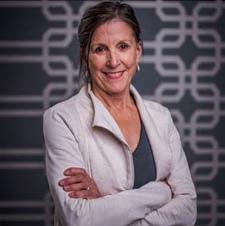

@FanjoyLabrenz | fanjoylabrenz.com
Sarah (Sally) Fanjoy is a visual artist working primarily in photography, videography and light - how it falls, reflects, transmits and connects. Slowing down to capture the beauty and elegance of close up details she creates large format still or moving images and sculptural pieces on metal and glass. Fanjoy studied at the International Center for Photography in New York and settled back in Hickory with her husband and partner James Labrenz. Together they have have exhibited in galleries from Atlanta to New York, received numerous grants from the United Arts Council including the recently awarded 2023 Artist Support Grant. Fanjoy-Labrenz led an artist collaboration for Corning Optical Solutions and the Hickory Museum of Art titled Seeing Light, How? Creativity Happens that included a final installation as well as an individual project using glass in late 2019 and early 2020. Currently their work Light in Space is on display at Lenoir-Rhyne University in PE Monroe Auditorium.
35 CREATIVES EDITION 14 NO. 1 THEMILLMAGAZINE.COM
Light in Space Triptic Photography, Sheer Fabric
Photos of artwork courtesy of ArtPop Street Gallery. Photos of artists by Robb Webb.
Nicole Driscoll


@nicoledfilms | nicoledriscollfilms.com
Nicole Driscoll is a filmmaker and photographer based in Charlotte, North Carolina. Her projects have been included in galleries and festivals such as Goodyear Arts, The Light Factory, Brooklyn Underground Festival, and The Curated Fridge. In 2014, Driscoll developed Films on Tap, a film festival that pairs local short films and locally brewed beer together. Driscoll currently works as a teaching artist at Studio 345, an afterschool program for at-risk youth, and a freelancer in the greater Charlotte community.
36 THEMILLMAGAZINE.COM EDITION 14 NO. 1 CREATIVES
Hands in the Sky Photography
Photos of artwork courtesy of ArtPop Street Gallery. Photos of artists by Robb Webb.
Bryant Portwood
@bryantportwoodart | bryantportwood.com
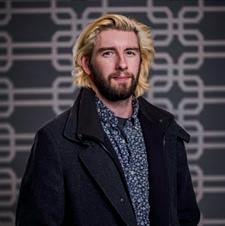
“My work combines visual elements from my childhood with kitsch elements of pop culture to influence the viewer’s perception of the past and address escapism through false, idealized memories. Following the start of the pandemic, I began to stray away from depicting the figure as the focus of my work and started to lean on trinkets as my subject of choice. We place value in ordinary, mundane objects. Personal objects can hold significant meaning where they serve as a reminder and are nostalgic, or they serve as an enabler for our imagination to take over and urge escapist desires. I’ll admit it, I paint a lot of toys. Not only do they serve as an extension of my personality, but they are objects that I have found a nostalgic comfort in. However, there is a certain blurriness to all the fond memories I have, and I try to echo that surreal quality in my paintings as if everything I have experienced thus far has had an impact on shaping these selective memories. My saturated color palette mimics the vibrancy of commercial advertisements, comics, memes, films, and other saturated images that I have been bombarded with. The fact that I am regurgitating all of these as influences create an ambiguous feeling where my work can be dreamlike, funny, or even dark. With my classical training, I aim to pay homage to the past through the physical process and techniques of painting, while adding my own contribution to the conversation through my use of color and my tendency to paint unorthodox subjects.”

37 CREATIVES EDITION 14 NO. 1 THEMILLMAGAZINE.COM
This Town is a Fishbowl Oil Painting
Addison Wahler
@addisonwahlerart | addisonwahler.com

Addison hails from a family of artists and creative thinkers. He credits his grandmother Beverly as his greatest inspiration. Beverly’s style was abstract expressionism; she was greatly influenced by the stylings of Morris Louis and Paul Jenkins. Addison’s father Robin, who has also painted as a creative outlet throughout his career in landscape architecture, has influenced Addison’s style as well. Robin’s friends, family and clients credit him with creating “Rothko-esque” pieces. Addison’s mother Deb, followed her creative path as an urban designer, landscape architect and professor at UNCC. Her work inspired Addison to pursue urban design, earning him a masters degree in 2020 from UNC Charlotte. When Addison was old enough to appreciate and learn from his grandmother’s and parent’s work, he incorporated many of their techniques and practices into his own creations. Although his work is very similar to that of his family members, he has his own voice. His paintings are intended to be glorified Rorschach tests. The viewer is intended to make their own conclusions and interpretations. Addison’s most recent work focuses on his personal struggles since moving back to Charlotte from Baltimore, MD. These paintings illustrate depression, loneliness, solitude and the journey he went on to overcome those factors. The recent work is also communicative of the women in his life that have saved him from self-destruction. This new series was started with the painting entitled ‘’Blondzai” and is continued into “Re-Ignition.” These paintings share a theme of unconditional love and support when Addison was struggling the most.

38 THEMILLMAGAZINE.COM EDITION 14 NO. 1 CREATIVES
Re-Ignition
Oil Paint and Digital Finishing
Rebecca Lipps
@rebeccalippsart | rebeccalippsart.com
Rebecca Lipps is a multifaceted artist and educator cultivating immersive experiences by combining sculpture and video. She enjoys pushing the boundaries of technology and art making to create a new form of expression. The inspiration for her ArtPop billboard artwork titled, Color Tangles, comes from her studies of invisible energies. The painted sculpture depicts the energy emerging from the performance of eye movement in the video. Her painting background developed from her studies at Xavier University where she received her Bachelor of Arts. She also received a Master of Fine Arts from Winthrop University, where she concentrated on video installation. She believes video is a tool that is currently impacting human society and sees the importance of highlighting it in combination with fine art. It is also important to her to impact her community by making public art and involving herself in arts organizations around Charlotte.


39 CREATIVES EDITION 14 NO. 1 THEMILLMAGAZINE.COM
Color Tangles Wood, Modeling Foam, Paint, Digital Video
Photos of artwork courtesy of ArtPop Street Gallery. Photos of artists by Robb Webb.
Emily Batson

@emilybatsonart | emilybatsonart.com
Emily Batson is an artist and art educator based out of Waxhaw, NC. She got her start with her parents, sewing in the dining room or building in the woodshop. Emily won an award in high school that took her on a week-long trip to NYC to visit artists, craftsmen, and fashion designers in their studios. That week would set her trajectory to pursue art as a career. In college, she studied Art Education and mastered a wide range of mediums before settling on oil paint as her preferred medium. Emily chose to become a teacher to create the same nurturing environment for students that she thrived in. She returned home to Charlotte to teach in public schools. Her time teaching was a deep growth experience. She taught large refugee populations and students from all different backgrounds. The art classroom refreshed and unified her students with restful creativity and satisfying craftsmanship. Now married with three kids to love and enjoy, she is afforded time to explore her own artistic endeavors and teach private lessons as well as online classes. “My artwork reflects the beauty of life around me. I especially love how the raw elements of our world interact to produce stunning beauty. Trees have captured my attention for years- the giant reaching branches, the light breaking through the canopy, and the record of growth through adversity. Bright pops of color and intuitive lines are characteristic of my work.”

40 THEMILLMAGAZINE.COM EDITION 14 NO. 1 CREATIVES
Reaching Sycamore Oil Paint and Colored Pencil
Acrylic Paint, Colored Pencil, Ink, Cardstock
Haley Horner
Student Artist | @haley.ayana.art | haleyahportfolio.weebly.com

Haley Ayana Horner is a senior at Fort Mill High School in South Carolina focusing on visual art studies. She has had her art included in local competitions including the Congressional Art Competition for her district in 2022, and currently has a piece displayed in the US Capitol. Art began as a hobby and a creative outlet in middle school but has grown to become one of her favorite ways to communicate ideas and emotions. She is interested in the concept of bringing the world in one’s head to life to be experienced by others and show how people can all relate to each other. Her ArtPop submission is titled “Immersion” and illustrates how people use music as a therapeutic escape.

41 CREATIVES EDITION 14 NO. 1 THEMILLMAGAZINE.COM
Immersion
Photos of artwork courtesy of ArtPop Street Gallery. Photos of artists by Robb Webb.
Anna Dean
@annadeanart | annadeanart.com
Anna G. Dean is an interdisciplinary artist, working in sculpture, installation, video and mixed media. She began her career in Art Education, with a focus on Contemporary Art and Arts Integration. She was selected for the Art21 Educators program in NYC, and helped create the SmartArts program in Greenville, SC. She recently completed her MFA at Winthrop University, where she currently teaches and coordinates the CreatorSpace technology lab. Anna also works as a production designer with ACSM, a design/build firm in Charlotte, NC. Anna’s work has been exhibited at the Mint Museum, the McColl Center, the Brooklyn Collective, Redux Gallery and at Miami Art Week. Anna has public art installations at Atrium Health in Charlotte, NC and at Miracle Park in Rock Hill, SC. She has been an artist-in-residence at the McColl Center, and has been awarded a project space at Goodyear Arts. Anna currently lives and works in Fort Mill with her husband and son.


42 THEMILLMAGAZINE.COM EDITION 14 NO. 1 CREATIVES
Glitch #4
Wood, cast acrylic, spray paint, copper patina, nails
Chad Cartwright

@chdwckart | chdwck.com
CHD:WCK!, is a non-traditionally trained (self-taught) Visual Artist, whose aesthetic tastes were shaped in and around East Orange, New Jersey. Whether working with paper, paint, inanimate objects, or human figures, his work is fueled by a fascination with raw texture, strong lines, soft curves, and a desire to celebrate the overlooked beauty in the ordinary. This leads to a unique approach to creating artwork that is equally challenging, enticing, and refreshing. CHD:WCK!’s recently contributed to the Black Lives Matter mural on S. Tryon St. in Uptown Charlotte. His work has also been on display at museums and galleries here in Charlotte and other cities along the East Coast.
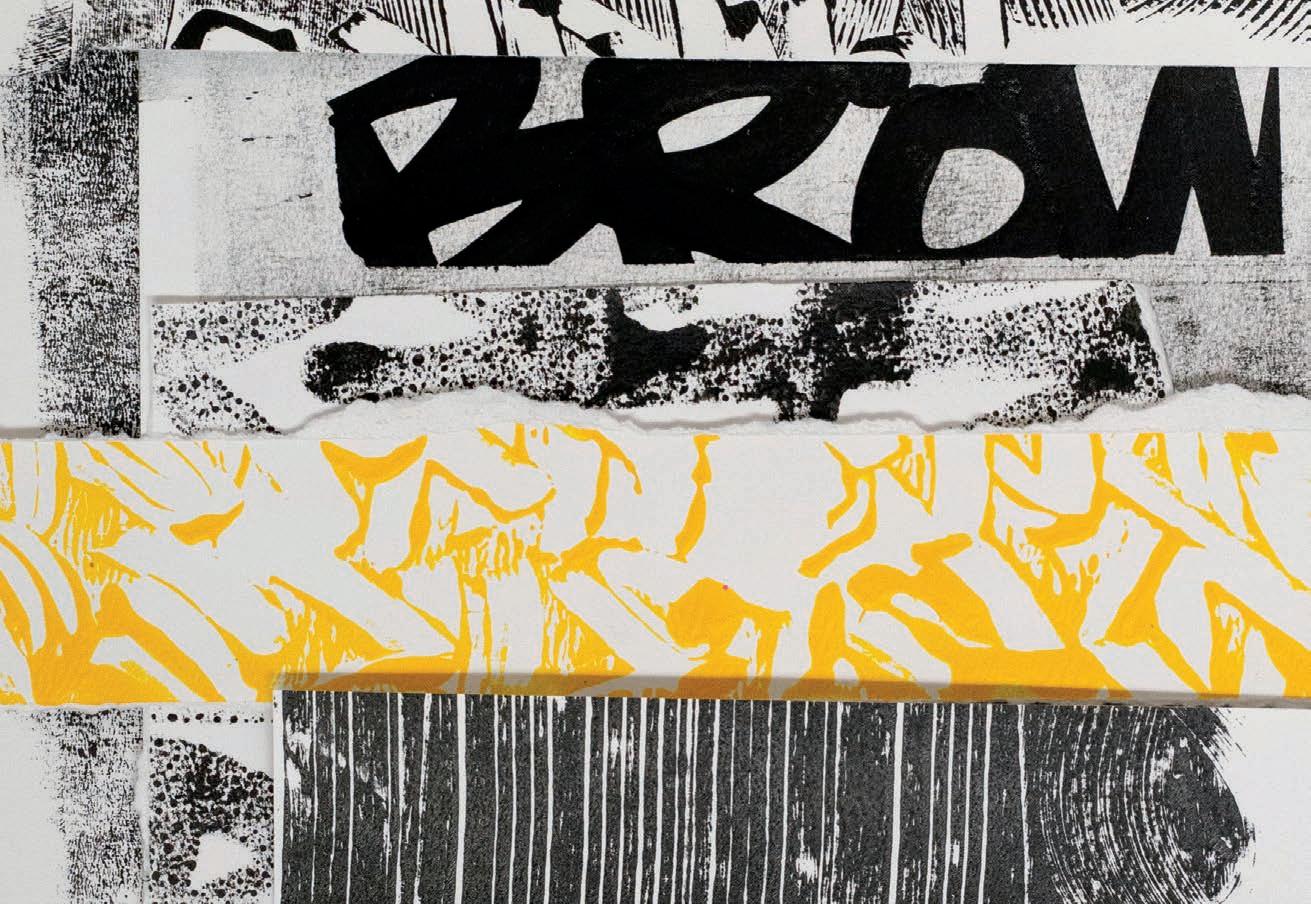
43 CREATIVES EDITION 14 NO. 1 THEMILLMAGAZINE.COM
Three Fads Acrylic Paint and Collage on Paper
Photos of artwork courtesy of ArtPop Street Gallery. Photos of artists by Robb Webb.
Daisies on Teal Wool Embroidery on Wool Crochet in Copper Foil-Covered Hoop
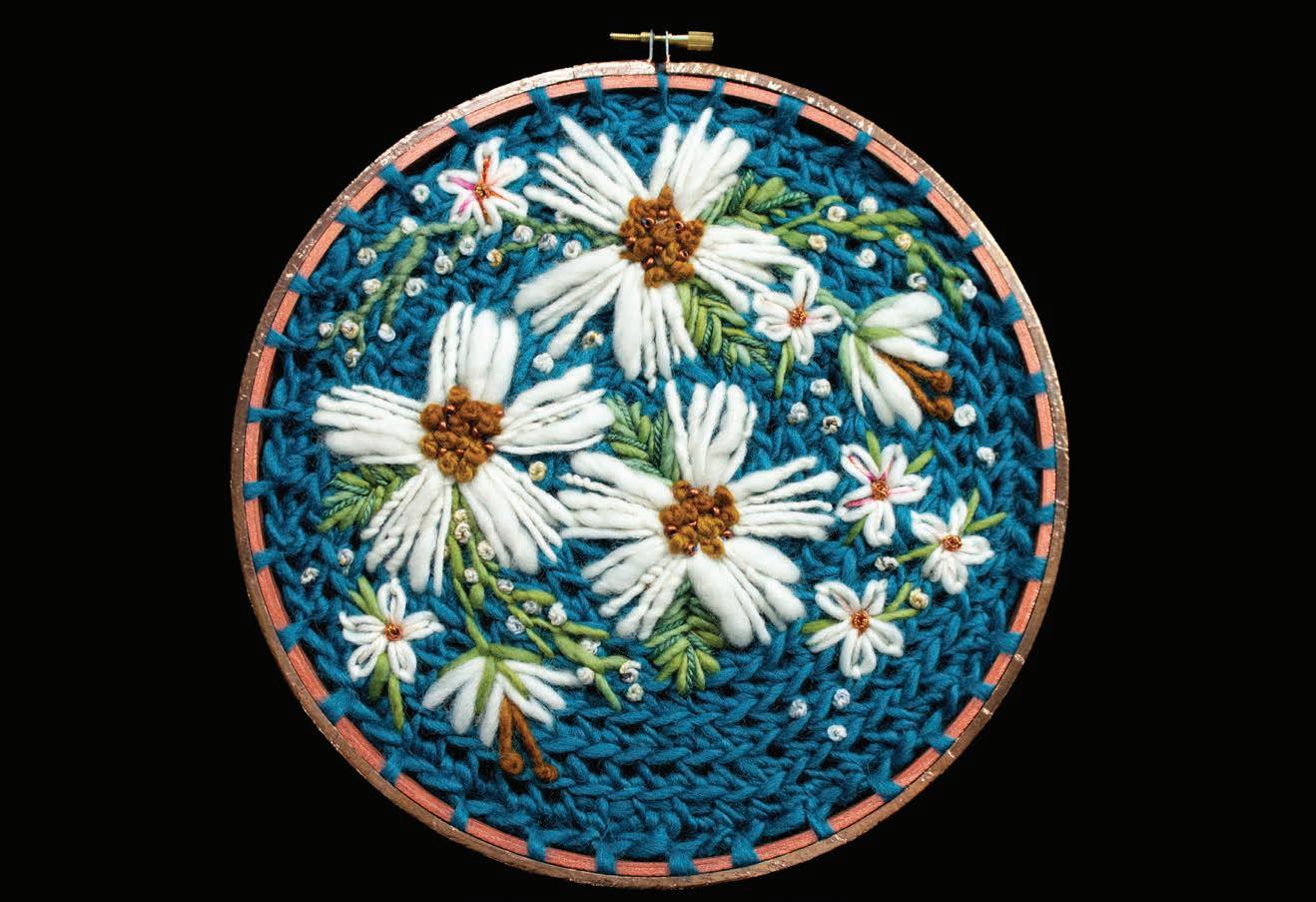
Andrea Brinkley

@oandystudio | oandystudio.com
Andrea Brinkley, aka Andy, creates in her home studio in Matthews, NC. Her wool embroidery art is inspired by her love of flowers and colors. She grew up on a sheep farm in South Africa. She learned to knit and sew while young and later added crochet and embroidery to her cadre of skills. Today, Andy builds crocheted surfaces directly onto embroidery hoops and applies her unique approach to crewel embroidery. She stitches freehand, using her mastery of techniques to create textural effects with hand-spun and dyed yarn. She loves to experiment on unexpected surfaces such as crocheted wire or old tennis rackets. She also makes jewelry with yarn and wire.
44 THEMILLMAGAZINE.COM EDITION 14 NO. 1 CREATIVES
Photos of artwork courtesy of ArtPop Street Gallery. Photos of artists by Robb Webb.
Matt Myers

@myerspaints | myerspaints.com
“My first career took me to Portland, Seattle, and New York, where I worked with copywriters to create award-winning television spots, outdoor boards, and print ads for many clients, including Jansport, IKEA and Snapple. As a fine artist, I have exhibited my paintings in Brooklyn, Manhattan, Los Angeles, and Charlotte, been a guest exhibitor at the Mint Museum, and displayed artwork in Manhattan. Individual clients frequently commission my work. I’ve illustrated over twenty books for other authors and four of my own. My books have received several starred reviews from reviewers such as Kirkus and Publishers Weekly. My illustrations have been shown several times in the Society of Illustrators Original Art Show in New York. I have received a Theodor Suess Geisel Honor award, and my most recent book was featured in the Wall Street Journal. Publishers include Holiday House, Random House, Macmillan, Simon & Schuster, HarperCollins, and Candlewick Press.”

45 CREATIVES EDITION 14 NO. 1 THEMILLMAGAZINE.COM
Patrol 7 Oil Painting
Leigh B. Williams

@lbwilliamsart | lbwilliamsart.com
A blank surface. A loosely formed idea. A finished work. The challenge. Sketches in a visual journal. Drawings and studies of color and composition. Brush to canvas. Pushing and pulling. The image emerges. Pleasing to the eye. Speaking to the soul. The satisfaction of creating. Leigh as an artist. Leigh B. Williams, backed by a BA in Fine Art from the College of William and Mary, when asked how long it took her to create a particular piece she likes to smile and say, “A lifetime.” A lifetime of experimenting with color and form, various materials, studying the Masters, engaging with the medium, and a lifetime of observing and participating in life itself. Leigh specializes in acrylic and alcohol ink paintings and collaborative work. She currently exhibits and sells her work primarily in the Southeast. Her work can be seen at her studio and on display in the Charlotte Visual and Performing Arts Center (VAPA), and in several North Carolina galleries. Leigh delights in passing on her passion for the arts to others. She is an active member of the arts community in Charlotte and participates in and supports the work of community groups and other artists in the community. As a former fulltime art instructor, she still likes to teach workshops and conduct demonstrations for both adults and children. Leigh and her husband Dean are residents of Charlotte and have three grown children and a passel of delightful grandchildren.

46 THEMILLMAGAZINE.COM EDITION 14 NO. 1 CREATIVES
Refreshing Waters Acrylic Paint
Photos of artwork courtesy of ArtPop Street Gallery. Photos of artists by Robb Webb.
Esther Moorehead
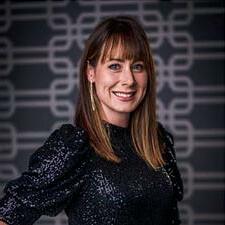
Esther Moorehead was born in Toronto, Canada. She has lived in Canada, Ireland, and the US. She’s an avid traveler, soaking up inspiration from each new place. From a child, Esther loved creating. Her whole life has been immersed in creative outlets, from drawing and painting to stage design and small theatre production, piano performance and accompaniment, to event planning. After graduating with a bachelor’s degree in Fine Arts in South Carolina, she returned to her hometown of Toronto to teach high school visual art and geography for 10 years. During that time, she was married and had two daughters. She decided not to return to teaching but instead build a career as an independent studio artist. Esther faced a cancer diagnosis just a month after her first baby was born. The journey through treatment and recovery reshaped her perspective of life and the purpose for her work. She realized that every moment of life is God-given and valuable. Even in the darkest places, where there’s life, there’s hope—hope to love and learn; to work together; to build and create; to forgive and change. Now cancer-free, Esther’s desire is to create artwork that embodies those ideas. In 2018 when her family relocated to Charlotte, she used the opportunity to develop new relationships with galleries and arts organizations, as well as build a network of inspiring and influential artists and creatives. She has been represented by and exhibited with multiple galleries in Canada and the US. She has won awards and has painted murals in public spaces. Her paintings reside in private collections worldwide.

47 CREATIVES EDITION 14 NO. 1 THEMILLMAGAZINE.COM
@esthermooreheadart | esthermoorehead.com
Reemergence Acrylic on Canvas
Will White
@ThatWillWhite | thatwillwhite.com
Will White lives to create art. From his time at Howard University, majoring in Fashion Merchandising, to his employment

Illustrating for Tyson’s Galleria in Washington, D.C., he’s always been drawn to the visual aspect of creation. Although his major in school was centered more around the business aspect of the fashion industry, Will was drawn to take Sewing I, Il, and Ill while in undergrad after purchasing a sewing machine on a whim. Since then, Will has taught himself through trial, error, and experience. 17 years later, he has designed womenswear, menswear, dog outfits, dance costumes, his wife’s wedding gown, and his own tux for their special day, and was even chosen as a semifinalist for Project Runway Season 17. In the Charlotte community, Will’s word-of-mouth clientele has truly kept him busy. As one of the queen city’s fresh faces in the fashion and visual art scenes, Will is intent on pushing Charlotte’s style to limits some could only dream of while always making sure to keep it “cool.”
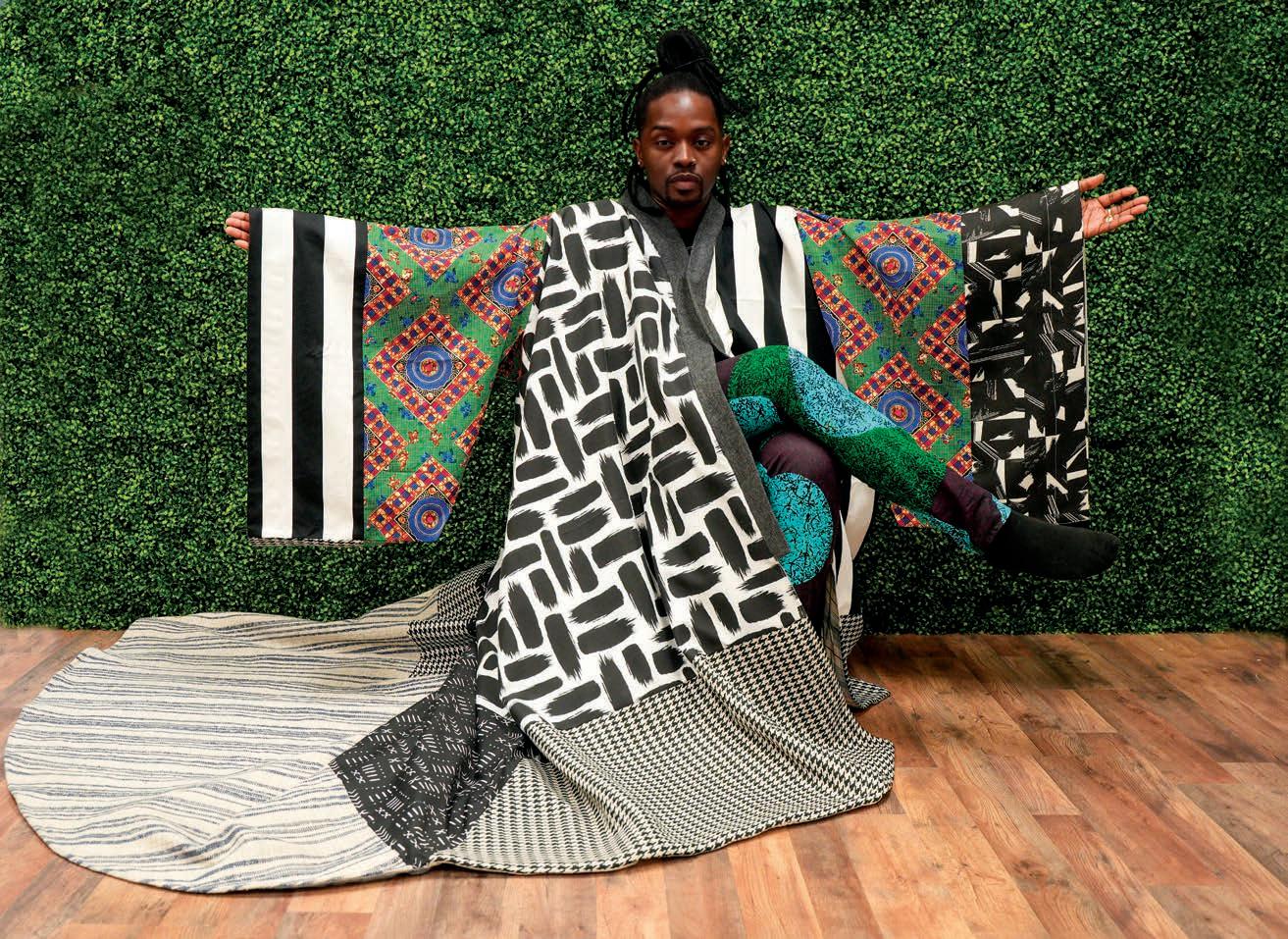
48 THEMILLMAGAZINE.COM EDITION 14 NO. 1 CREATIVES
Patchwork Kimono Cotton
Photos of artwork courtesy of ArtPop Street Gallery. Photos of artists by Robb Webb.
Troy Barnett


@barnett_art_and_forge | barnettartandforge.myshopify.com
“My name is Garland Troy Barnett, but everyone calls me Troy. I am a self-taught bladesmith living in Hickory, North Carolina. I have always been someone who gravitated toward artistic outlets. I’ve explored many avenues of art over the years, from wood sculpture to oil painting. However, my fascination with blacksmithing started at nine years old when a neighbor showed me my first forge. As I grew older, I met and married an amazing woman, had two beautiful daughters, and life went on as normal. I could not find the time or tools to pursue a blacksmithing career, but it was never far from my mind. One day, I decided I had time to start my own forge, and I began teaching myself the craft. It became my preferred art form, and I surrounded myself with experienced individuals to learn more and grow my business. My family has supported my passion by helping me sell my products and build my brand Barnett Art and Forge. Now with over ten years of forging under my belt, I create one-of-a-kind blades in my spare time and sell them online or in person at local craft shows. I am inspired by the history of the bladesmith trade and the materials I use. My favorite part of making collectible knives are the stories they can tell. Many of my items are made using scrap metal found locally or even your grandfather’s old farm equipment. I find that creating in this way is sustainable by reusing metal that would otherwise be trash and gives so much more meaning and history to the finished piece. Thank you so much for supporting my passion and for keeping the bladesmith trade alive.”

49 CREATIVES EDITION 14 NO. 1 THEMILLMAGAZINE.COM
Blood Wood Damascus Blade High Carbon Steel, Blood Wood Handle, Handcast Pommel/ Hilt
Autumn Payne

@autumnpayne.art | autumnpayneart.com
“My name is Autumn Payne, and I am forever growing artist located in the rolling hills of Charlotte, North Carolina. I have a sweet puppy named Max, and I love dreaming, building, and giving life to beautiful things. I primarily work in sculpting but often explore painting and printmaking throughout my practice. As an artist, I believe that art is an expression, an extension of oneself into the reality that we live and breathe every day. In every piece I create, I give myself over to exploring the human experience and my medium and watch it take on a life of its own. I invite you to come along for the journey with me as I document my connections and this incredible world around me.”

50 THEMILLMAGAZINE.COM EDITION 14 NO. 1 CREATIVES
Mingling Of Souls Clay
Photos of artwork courtesy of ArtPop Street Gallery. Photos of artists by Robb Webb.
Arthur Rogers, Jr.
@arthurrogersjr | arthurrogersjr.com

A native of North Carolina with parental roots from Sint Eustatius and Trinidad, Arthur is a US Army Veteran and a graduate of East Carolina University with a degree in Communications Arts with a concentration in Illustration. Arthur’s career path has provided him with a wealth of experience while holding positions in several design firms and advertising agencies, and serving as a College Instructor and Department Chair. His artistic skill sets include Illustration, Graphic and Web Design, Videography, Photography, and Painting. Currently, Arthur is the Executive Director of the Visual and Performing Arts Center - VAPA Center, located in Uptown Charlotte, NC where he is also a resident artist, a member of the Palette Table Collective, and is represented by Nine Eighteen Nine Studio Gallery. In the summer of 2020, Arthur launched an apparel brand exclusively targeting artists called ArtGear.
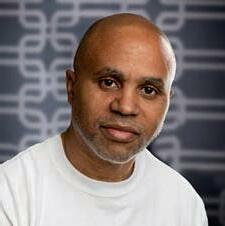
51 CREATIVES EDITION 14 NO. 1 THEMILLMAGAZINE.COM
a MTM THE MILL MAGAZINE
Thiefing Oil Painting
DRAYTON HALL
Conde Nast Traveler’s “Best Place to See in South Carolina”. America’s oldest unrestored plantation circa 1738 open daily for house tours, plantation tours, and museum exhibits. Drayton Hall is the nation’s earliest example of fully executed Palladian architecture and a must-see plantation house visit when traveling to Charleston.


charlestoncvb.com | draytonhall.org

PLAN YOUR TRIP COME FOR THE HISTORY AND STAY FOR THE FOOD


2460 INDIA HOOK RD, SUITE 206, ROCK HILL, SC 29732 | 803-985-2020 | PALMETTO-EYE.COM
54 THEMILLMAGAZINE.COM EDITION 14 NO. 1 CREATIVES inspiring
town culture
CHARACTER ∙ BACKYARD ∙ TEXTURE ∙ PROVISIONS
small
Texture
WOMAN FOUNDED. FAMILY OWNED. LOCALLY OPERATED. SINCE 1975.












 MARIE DEMARTINO 704. 502. 7426
LYNAE CROCKER 704. 641. 8411
GAMBLE PATTERSON GROUP 803. 627. 1503
ILY MUÑOZ 704. 900. 4773
JO BUTTERWORTH 704. 267. 3643
PAULINE TOMS 310. 462. 4036
MARIE DEMARTINO 704. 502. 7426
LYNAE CROCKER 704. 641. 8411
GAMBLE PATTERSON GROUP 803. 627. 1503
ILY MUÑOZ 704. 900. 4773
JO BUTTERWORTH 704. 267. 3643
PAULINE TOMS 310. 462. 4036
| @helenadamsrealty
BRYNANNE NIELSEN 904. 899. 2405
helenadamsrealty.com
AMY MERRIGAN 518. 810. 5428
ROSHAWN ROSS-HAMPTON 704. 293. 0212
AIMEE MACKIMM 203. 536. 3441
WHITNEY BRIDGES 615. 631. 1066
Guild of Charlotte Artists

75 YEARS OF PROMOTING LOCAL ART AND STILL LOOKING FORWARD
Text by Susan Moore

56 THEMILLMAGAZINE.COM EDITION 14 NO. 1 CREATIVES
(Clockwise from top left) Marsh Wonder by Connie Winters, Southend After The Rain by Anand Wakankar, With The Wind At Your Back by Carol Pighin, Taking Care Of Bunnies by E.W. Harvey, The Robin Nest V by Torrie Smiley. All photos courtesy of Guild Of Charlotte Artists.
1945brought the end of WWII, and with it, unprecedented enthusiasm and growth as soldiers returned home to their sweethearts, wives, or families. Life had come to a standstill for the first half of the 1940s as resources of labor and materials went towards the war effort. But by 1948, things began to change drastically and a never-before-seen boom occurred. Young couples, who had put off marriage and families during the war, were having children - thus the “baby boom” was born! Veterans were able to own homes thanks to the new VA mortgage and FHA loan programs. In Charlotte and cities across the nation, there was a housing boom as the new “suburbia” dream was realized when affordable neighborhoods sprang up.
As this post-war lifestyle was bringing growth and change to where and how people lived, there were changes in the Charlotte business world as well. Young men returning from the war were able to go to college on the GI bill to better their education, Charlotte was becoming an important financial hub in the nation, and jobs abounded as the city grew.
Things were changing in the art world as well. With new life, new prosperity, and a return to a new and better life than before the war, there was an emerging excitement in art and “finer things”.


Prior to the war, a group of Charlotteans led by Mary Myers Dwelle, “Recogniz(ed) the need to give the arts a permanent Charlotte home, (so) sights were set on the historic-but-condemned U.S. Mint building on Tryon Street. The task of transforming the Mint into an art museum

57 CREATIVES EDITION 14 NO. 1 THEMILLMAGAZINE.COM
was daunting until a passionate speech for saving the U.S. Mint building was presented in February 1933 at a luncheon hosted by Dwelle. The speech inspired a spontaneous donation, and a significant sum was given toward the purchase of the building—that was already in demolition—for rebuilding on another site. The generosity was contagious. Within two days, the required funds were raised and paid to the demolition contractor.” (Spring 2020 article from Mint Museum Members Magazine). A year before the opening of the Mint Museum, a group of local artists formed the Society of Charlotte Artists in order to provide a place to display and sell their art. The downtown gallery opened in February in Efird’s Department Store in 1935. The next year, The Mint Museum of Art - the first Art Museum in North Carolina- opened in 1936 on its current site.
After the war in 1947, Mrs. A.T. Hanes had the idea of a traveling show for local artists to give their work more exposure in a larger area. This led to the formation of the Guild of Charlotte Artists in 1948 (Charlotte Observer, December 6, 1948). The seven founding members were led by Paul Bartlett, who served as the first President. Their works were traditional portraitures, still life, landscapes, and sculptures. Sponsored by the Mint Museum, the Guild’s traveling exhibitions were held in cities and towns throughout the Carolinas and as far away as the High Museum in Atlanta and the University of Georgia in Athens.
The fundamental purpose of the Guild was to promote the arts in Charlotte by giving artists an opportunity to meet, encourage each other, and display and sell their art in a variety of
settings. The Mint Museum provided a room for the Guild to meet monthly and display their work for the public to see. From the beginning, membership grew quickly, but the process to join was not an easy one. Artists who wanted to become part of the Guild had to submit an application complete with 5 examples of their work to be juried in order to become an exhibiting member.
Throughout the ’50s, the Guild grew to include prominent local artists. With that growth, the members continued to add more exhibits and shows at the Mint Museum as well as multiple venues in the Charlotte and surrounding area. Each spring, the Guild held an outdoor “Fence” show on a fence in Myers Park. Members’ art was regularly exhibited in the North Carolina National Bank and First Union Bank lobbies, Charlotte College (now UNCC), Queens College, The Charlotte Observer Building lobby, and local hospitals. In 1963, Dr. Bonnie Cone from Charlotte College asked the Guild artists to have a permanent display in their new library. Eventually, the Mint Museum, in a decision to focus more on national and international art, no longer displayed art from the Guild - but continued to provide meeting space for the members.
Until 1965, when another arts group was formed in Charlotte, the Guild stood alone. However, the stringent membership requirements of being “juried” continued until the 1980s. The elimination of that opened the group up to a wonderfully diverse group of artists from seasoned professionals to hobbyists and even those who just love and appreciate art.
58 THEMILLMAGAZINE.COM EDITION 14 NO. 1 CREATIVES
(Clockwise from top right) Wind River by Michele Morrice, Under The Oak Tree by Susan Dade, Untitled by Shefalee Patel, Soaking It All In by Angela Lubinecky. All photos courtesy of Guild Of Charlotte Artists.




59 CREATIVES EDITION 14 NO. 1 THEMILLMAGAZINE.COM




60 THEMILLMAGAZINE.COM EDITION 14 NO. 1 CREATIVES
(Clockwise from top) Regal Reflection by Martha Manco, Untitled by Mikel Frank, Blind Following by Maria Senkel, Wild Irish Rose by Eileen Covington. All photos courtesy of Guild Of Charlotte Artists.
As Charlotte continued to grow and prosper through the ’70s, ‘80s, and ’90s, so did the interest in creativity and art. The Guild’s membership grew to 200 members. Monthly meetings brought in artists and lecturers from around the country. Demonstrations and workshops were held for anyone interested in learning how to draw, paint and create. Auctions of members’ art and fundraisers were held. Scholarships were given to budding young artists.
The past 25 years have brought new challenges with technology, and ways of communicating and interacting with others - making the world “smaller” through access to more than could ever have been imagined prior to the internet and social media. For the art world, cuttingedge techniques, materials, and even the ways in which art can be viewed across the globe have happened at hyper speed. Keeping up is a daunting task to which the Guild has been adjusting. Adding to the changes, of course, have been the events of the past few years as the world went into “pandemic” mode. Technology became a friend and ally as monthly meetings continued to be held via zoom through the leadership of past President Mary Kamerer. It was not without its struggles. “Like many organizations, things slowed a lot during covid,” said Kamerer. There were times when only 6-7 members joined the zoom meetings, and there was concern that
the Guild would not survive. But, with public gatherings canceled, venturing into the world of “Virtual” art shows was new territory that proved successful for the Guild.
Not only did the Guild survive, but is thriving! In-person meetings began again a year ago and membership has increased to 135. Monthly meetings showcase members’ art, visiting artists, and lecturers demonstrate and share new, exciting methods. The Guild currently has two juried member shows a year - a spring show at Christ Episcopal Church in Charlotte, NC, and a Fall show at the McDowell Arts Center in Matthews, NC.
Looking forward as the Guild reaches its 75th anniversary, current president Shefalee Patel is excited to see where the next few years will take the Guild. She loves working with the Board and learning from a great group of veteran and accomplished artists. "We plan to focus this year on refreshing and collaborating.” She feels the Guild is ready to “expand our organization and enhance our experiences.”
Plans are in the works for a celebration in May of the Guild’s 75 years as Charlotte’s oldest continuous arts group. To learn more, go to guildofcharlotteartists.online.
61 CREATIVES EDITION 14 NO. 1 THEMILLMAGAZINE.COM a MTM THE MILL MAGAZINE
Provisions
inspiring small town flavors + shopping
62 THEMILLMAGAZINE.COM EDITION 14 NO. 1 CREATIVES
CHARACTER BACKYARD TEXTURE PROVISIONS
















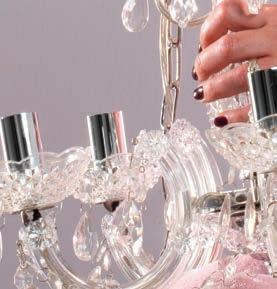











Locally owned and mismanaged since 1977. blackhawkhardware.com WE PROVIDE THE EQUIPMENT. It’s up to you to use it right.
LINDA EDER

APR 2, 2023
Knight Theater at Levine Center for the Arts
blumenthalarts.org

64 THEMILLMAGAZINE.COM EDITION 14 NO. 1 CREATIVES SHOP, EAT, and DISCOVER . . . LOCAL EVENTS { { ' '
p.1
dolce lusso salon & spa dolcelusso.com
p.2
burns cadillac burnscadillac.com
p.4
providence chiropractic providence-chiropractic.com
p.6
dewils fine cabinetry dewils.com
p.8
artpop street gallery artpopstreetgallery.com
p.14
travel like tracy travelliketracy.com
p.17
monarch dentistry of gold hill monarchdentistryofgoldhill.com
p.25
hydrate medical fortmill.hydratemedical.com
p.26
mackey realty mackeyrealty.com


p.27
redstone family vision redstonevision.com
p.29 p.52
frick trent lizzio fricktrentlizzio.com
explore charleston charlestoncvb.com
p.53
palmetto eye palmetto-eye.com
p.55
helen adams realty helenadamsrealty.com
p.63
blackhawk hardware blackhawkhardware.com
p.64
blumenthal performing arts blumenthalart.org
p.66
the trailer store thetrailerstore.online

p.67 epps orthodontics eppsorthodontics.com
p.68
made in the mill madeinthemill.com
p.70
artpop street gallery artpopstreetgallery.com
65 CREATIVES EDITION 14 NO. 1 THEMILLMAGAZINE.COM SHOP, EAT, and DISCOVER . . . LOCAL BUSINESSES SHOP•EAT•DISCOVER EXPLORETHEMILL.COM local shop . local for . a . vibrant prosperous community { ' { '


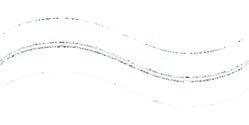

THE TRAILER STORE 2950 Old Nation Rd, Fort Mill, SC 29715 | 704-996-1998 | thetrailerstore.online ON HE MOV E T ON HE MOVE T THANK YOU First Responders and Veterans for your bravery, compassion, and service to humanity.”
“
-- William J. Boss, Owner with his wife and kids


929 MARKET ST, FORT MILL 803.548.2428 2660 CELANESE RD, ROCK HILL 803.329.1540 EPPSORTHODONTICS.COM | |
Thomas W. Epps, D.M.D., P.A.
Let’s work together to protect, foster, and strengthen the local independent businesses that make our community unique.
artists
Think, buy, and source
MADEINTHEMILL.COM

LOCAL.
 Featured artist is Ana Z @anaz_art.
Featured artist is Ana Z @anaz_art.

@ArtPopStreetGallery
G. Vincent
Tina














 Dr. Jessica Harden
Dr. Jessica Harden












































 Tracy M. Frick Esquire SC Founding Partner
Tracy M. Frick Esquire SC Founding Partner


























































 MARIE DEMARTINO 704. 502. 7426
LYNAE CROCKER 704. 641. 8411
GAMBLE PATTERSON GROUP 803. 627. 1503
ILY MUÑOZ 704. 900. 4773
JO BUTTERWORTH 704. 267. 3643
PAULINE TOMS 310. 462. 4036
MARIE DEMARTINO 704. 502. 7426
LYNAE CROCKER 704. 641. 8411
GAMBLE PATTERSON GROUP 803. 627. 1503
ILY MUÑOZ 704. 900. 4773
JO BUTTERWORTH 704. 267. 3643
PAULINE TOMS 310. 462. 4036





















































 Featured artist is Ana Z @anaz_art.
Featured artist is Ana Z @anaz_art.


